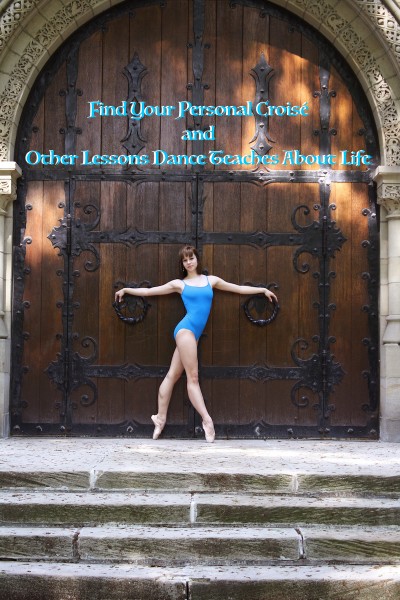Live to Dance and Dance to Live.
After a 25-year interval, I am rediscovering the joys of dancing. I live to dance and dance to live.
As I strengthen my body and mind and make new friends, dance is teaching me a lot about life. Here are three lessons I’m learning (may the education never end):
Taking Cues and Appreciating Pauses
Not long ago I took some time away from a career in international business to care for my three young children. While working non-stop and raising a family, I used to joke that I was a “hamster on a wheel” but also felt pride in accomplishing a multitude of responsibilities. Now that I find myself working at a slower pace, I am reflecting on the meaning of my actions.
When I observe more experienced dancers, it appears as if the music moves through them. The steps they perform are not individual notes but are woven together as one beautiful opera. The languid notes are stretched into the next beat and it appears as if the dancer is a spirit floating in front of us for our pure enjoyment.
The pause in my active daily pace came about somewhat abruptly and at times it has been challenging to adapt to the changes.
In the same way when dancing, it is difficult for me to slow down my movements and adjust my steps in order to be in sync with the music. At times, I am so concerned with the movements themselves that I block out the piece of music and I ask, “Have I become so focused on the process that I am oblivious to the end result?” In other words, in agonizing over each individual step, I ignore the art of the entire combination.
Taking time off from routine can become unbearable if we are used to constant flux and flow yet constant activity can make us oblivious to our purpose. Dance has taught me to listen to the cues and adjust my movements (in life and in dance) to the music that I hear.
Focusing on the Present

Let’s be honest. Every adult dancer faces challenges that are non-existent to an eighteen-year-old. Since resuming dance lessons in my 40s, I quickly ascertained that my teenage self is long gone. My grand battement is half of what it used to be and my ballon is more earthbound than airy and light. Alas, my return to dance was marred with bleakness and dissatisfaction until one fine day. I was performing an adagio on the floor when the instructor grabbed me by the hips and swiveled my body. “Find your own personal croisé,” she said.
At the time, I flushed red with embarrassment at being singled out in class. Later on the drive home her words repeated like a mantra in my head. “Find your own personal croisé.” What did I do wrong? Then I realized that I was literally pointing my body at the studio’s corner rather than finding my own personal corner relative to the space. Similarly, I was comparing my teenage dance accomplishments to my current self, thus always coming up disillusioned. I learned an important lesson that day.
My personal best has nothing to do with my past performance or that of other dancers. I need to focus on the current frame I am working within and strive to reach and even surpass its outer limits. The comparisons with my former self do not provide a realistic benchmark to help me achieve my goals of today. Maybe this is what my yogi friends call “living in the moment.”
Relaxing to Make Progress
Every dancer seems to have a favorite step. Maybe you love piqué turns or rond de jambes. On the other hand, you might have a dreaded step – for me is the petit battement. My heart sinks and my palms get sweaty when this is next up on the roster, usually right after some frappés. I find myself awkwardly flailing about as my entire leg struggles to beat front and back while my foot goes numb. Think of the Tin Man with his stiff limbs. How is it possible to only move from the knee down?
Well, here my wise teacher taught me yet another life lesson. “Relax!” She scolded. How does relaxing fit in with barre work? Well, I tried it just in case. It turns out that releasing the thigh muscle allows the lower portion of the leg to move freely. I began to see improvements right away.
So I got to thinking of all the times in my life when I have been so tense that I could not perform at my best. I mistakenly worked at my goals even harder, believing that greater effort would lead to progress. It never occurred to me that what I really needed was to simply relax but it makes perfect sense.
An unrested, stressed person is never truly a top performer. In this way, the petit battement lesson taught me that sometimes the best way forward is a deep breath in place.

Jennifer Seppa is a writer with 15 years of dance training and broad experience teaching children and adults. She is rediscovering the joys of dancing after a 25-year interval during which she studied and worked in international business. She blogs at www.sofiaseppa.com and is on Twitter @BottariJen

Dance Advantage welcomes guest posts from other dance teachers, students, parents, professionals, or those knowledgeable in related fields. If you are interested in having your article published at Dance Advantage, please see the following info on submitting a guest post. Read posts from guest contributors.

